What kayak should I buy? It’s the first question a kayaker asks, and often the hardest to answer. You have to choose the best kayak for you, but that’s the trick—finding the boat perfectly suited to your specific needs.
With dozens of companies producing hundreds of different models, there’s a kayak for every style of paddling and every type of paddler. If you can’t decide, buy two. There is no better way to grow as a kayaker than taking a friend.
This kayak buying guide will take you through everything you’ll need to consider before making a purchase, from finding the right size boat to deciding whether you need a skeg to picking a place to buy from. The first step, though, involves doing a bit of self-reflection into what type of kayaking you enjoy doing, and even what type of kayaking you’d like to do in the future.
“Start with the 5 Ws: who, what, when, where and how,” suggests Chris McDermott of Ontario-based outfitter Muskoka Paddle Shack. Once you answer the basic questions you can start narrowing the selection based on budget and boat fit.
Where and why do you kayak?
Figuring out where you want to paddle and what kinds of activities you want to do in your kayak will help determine what type of boat you should get.
For example, if you paddle open water and big seas, look at touring kayaks, which tend to be longer and narrower with smaller keyhole cockpits. If you paddle protected lakes and quiet rivers, check out shorter, more maneuverable recreational models.
Photographers, anglers and birdwatchers will appreciate the stability of a wider hull and the easy access of a larger cockpit or sit-on-top design. Rough open water playboaters will want an ocean-play kayak with plenty of rocker. Touring and camping aficionados will benefit from a longer waterline, higher volume and two, three or even four hatches for storing gear.
What if you have disparate paddling interests? Sometimes there isn’t a satisfactory solution to this other than buying two kayaks.
“What kind of water will you be in 80 percent of the time?” Kelly McDowell, the owner of Toronto-based outfitter The Complete Paddler, asks customers. “No single boat does everything well. Get something that’s suitable most of the time, and rent for the other 20 percent.”
So what exactly is a touring kayak and a recreational kayak? Next, we’ll provide explanations for the different types of kayaks you’re most likely to find online or in store.
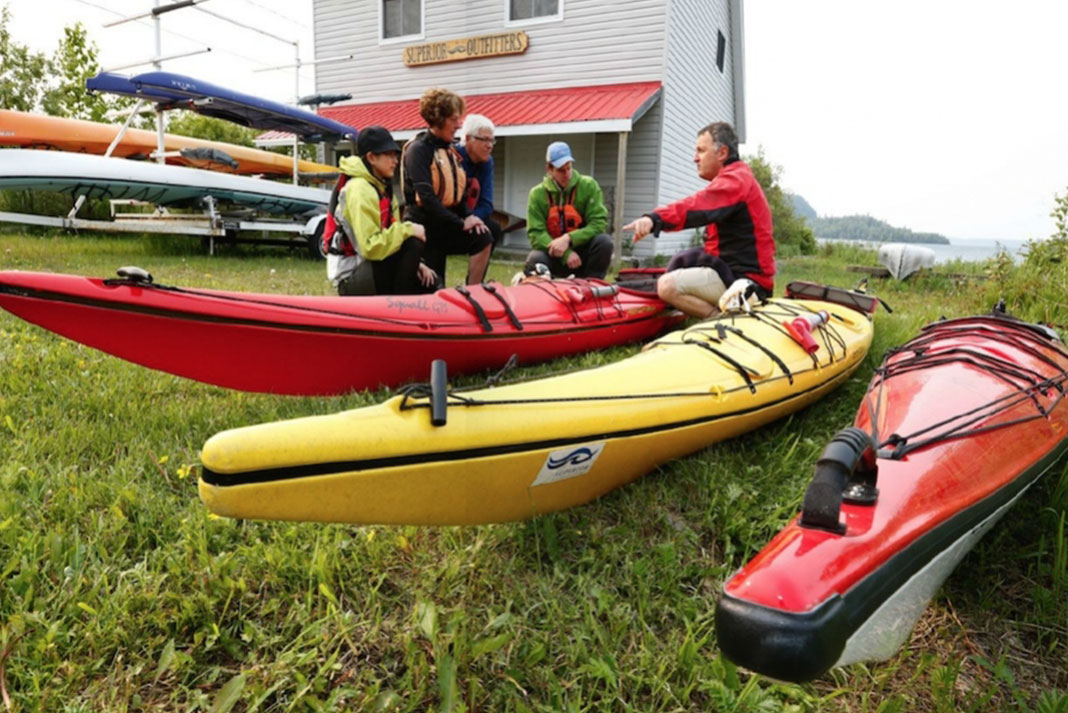
Types of kayaks
There are many different types of kayaks designed for specific water conditions, trip lengths and activities. There are also variations within some of these categories you’ll need to consider. For example, do you want a kayak for two people? Is a sit-inside or sit-on-top kayak better for your pursuits? Should you go with a hard-shell vessel or inflatable?
Let’s learn a little more about each of these types of kayaks.
Recreational kayaks

Recreational kayaks are ideal for paddlers who spend most of their time on lakes and slow-moving rivers. They typically have a flatter hull and are wider than most touring kayaks, giving them greater stability. However, the extra width also means they will drag more in the water and wind, making them a little slower than some other types of kayaks. Recreational kayaks are usually 10 to 12 feet in length, which may translate into improved maneuverability and worse tracking and efficiency than a longer design.
Touring and sea kayaks
Touring and sea kayaks are typically 14 to 18 feet in length, making them longer than most other types of kayaks. The long waterline of these boats lends itself to superior tracking; however, the drawback is they are more difficult to turn. Their length also allows for ample storage space for overnight or multi-day trips. Touring kayaks also tend to be narrower and sit lower in the water, these features allowing for greater speed and efficiency as the kayak cuts easily through wind and water.

If you’re on the fence between buying a recreational or touring model, decide how far from shore you want to paddle. For those headed further from the safety of land, “you need two bulkheads to be able to do a self-rescue,” says McDowell. “So you might need a touring kayak even though you’re a recreational paddler.” For added safety, also look for perimeter lines and grab handles on the bow and stern.
“If you’re starting out in lakes and harbors, and then in a few years you’ll be wanting week-long expeditions, buy a boat suitable for your end use,” advises Daniel Collins, retail manager at Ocean River Sports on Vancouver Island. “You can always use a touring boat on lakes, but a small recreational boat won’t suffice on multi-day trips.”
Fishing kayaks

Fishing kayaks are built for stability and durability, and usually not speed. They generally have lots of storage space for fishing tackle and gear, in addition to specialized features such as rod holders, mounting brackets, bottle holders and anchor lines, among others. Some have pedal-drive systems or trolling motor mounts so anglers can reach the fishing grounds faster.
Whitewater kayaks

Whitewater kayaks are typically four to 10 feet in length. They have lots of rocker (the curve of the hull from bow to stern), which allows for greater maneuverability. Most whitewater kayaks don’t offer a lot of storage space. They also don’t track very well on flatwater and are not efficient enough to paddle long distances. Whitewater kayaks are designed to do one thing really well—paddle on whitewater. The new crossover category in whitewater kayaks offers more versatility in one design.
Solo kayaks

Solo kayaks are designed to hold one paddler at a time. There are solo kayaks for a variety of purposes, from whitewater to recreation to fishing.
Tandem kayaks

Tandem kayaks are designed to hold two paddlers at a time. Some kayaks, like the AdvancedFrame Convertible Elite from Advanced Elements, have modifiable seat positions that allow for solo or tandem paddling. You can find specialized tandem kayaks for everything from fishing to touring to whitewater.
Pedal kayaks

Being able to have your hands free on the water can be of great benefit whether you are fishing or taking photos. With a pedal drive kayak you use your feet to push on pedals that move fins or a propeller attached to the bottom of the kayak. There is also a rudder to steer the vessel. Pedal kayaks do have reduced clearance, meaning you won’t be able to get into shallow water the same way you could in a paddle kayak. However they are faster and conceivably require less work as they make use of our strongest muscle group (the legs rather than shoulders).
Sit-inside kayaks
A classic sit-inside kayak offers the best protection from the weather and water, especially important in colder climates and on exposed coastlines. They also tend to be lighter and offer more interior dry storage than other kayak types.

Like kayaks themselves, cockpits come in all shapes and sizes—smaller equals dryer, larger offers easier entry and exit.
Sit-on-top kayaks
Sit-on-top kayaks are self-draining and easy to scramble back aboard after a capsize or upset. The open deck makes it simple to hop on or off, and these designs are also usually more stable than their sit-inside counterparts.

For a more detailed breakdown of the pros and cons, see our article on Sit-on-Top versus Sit-Inside Kayaks.
Inflatable and folding kayaks
Folding and inflatable kayaks come in a huge variety of styles, suited to everything from tame pond paddles to extreme expeditions. These boats are lightweight and easy to store and transport.

Check out our Inflatable Kayak Buyers Guide if you are interested in purchasing this type of boat.
Hard-shell or rigid kayaks

If performance is what you’re after, hard-shell (rigid) kayaks are a better choice than their inflatable counterparts. They tend to be faster in the water and readily cut through windy and wavy conditions as they sit lower in the water.
Skegs and rudders
“Skeg boats are usually higher performance than rudder boats,” notes Kelly McDowell of The Complete Paddler. “The skeg and rudder themselves have nothing to do with it: it’s the manufacturers who have decided that rudders go on lower performing boats and skegs go on high performance boats.”
A skeg assists with tracking in crosswinds or currents and pairs with fixed footrests for optimum stroke efficiency. Most rough water boats feature skegs, since the fin’s placement closer to the cockpit keeps it in the water more than a stern-mounted rudder when the waves are standing up.
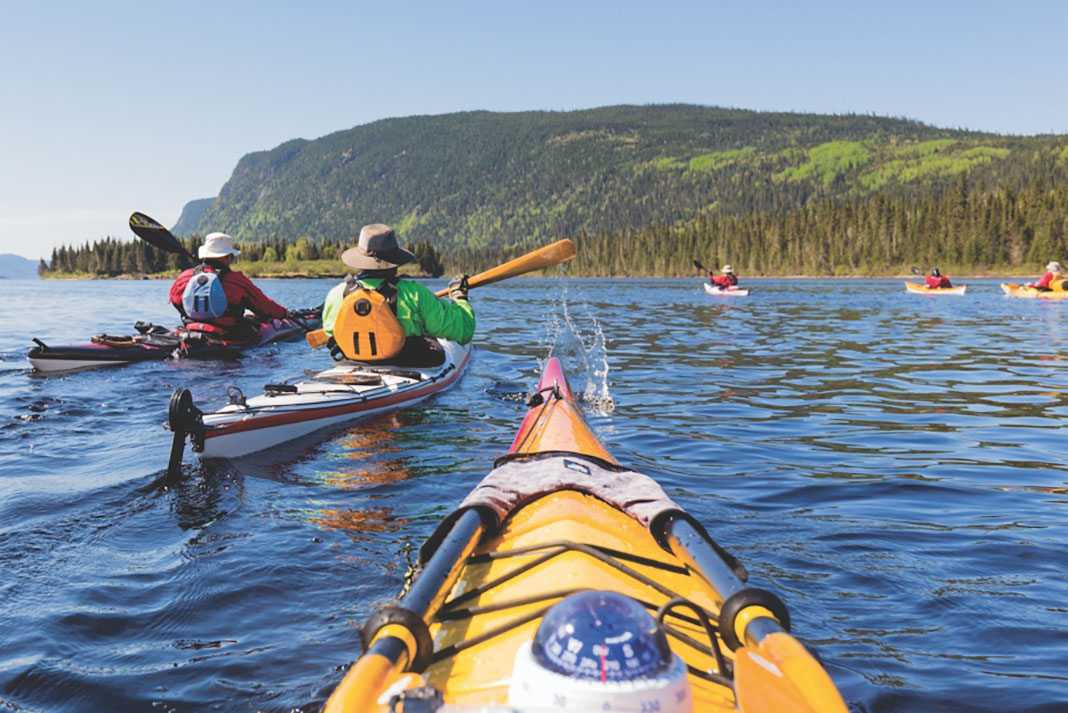
Rudders aid tracking and turning, making them ideal for kayak fishing, sailing and longer boats like tandems and race kayaks.
Many recreational kayaks sport neither. “If you go paddling only on nice days, you’re not paddling in wind, or your boat is shorter than 14 feet, you don’t really need a skeg or rudder,” says McDowell.
How to buy the right size kayak
“A boat is like a pair of shoes. If you want to run, you need proper fitting running shoes,” says McDowell. “Your slippers are comfy around the house but a little sloppy for sprinting. A loose-fitting boat is like a pair of slippers. The tighter the fit, the higher the performance.”
Therefore, when it comes to buying the right size kayak, the best thing you can do is actually sit in the boat.
“You can do all the research and find the perfect boat, then come into the store and sit in it and it doesn’t fit,” says Ocean River Sports staffer Julien Huard. Make sure the seat, backband or backrest and outfitting are comfortable and adjustable.
“Test paddle the boat loaded,” suggests Darren Bush, owner of Wisconsin-based paddle shop Rutabaga. It may handle well empty, but if you plan on tripping with the hatches full, “it can feel like a totally different boat.”
Here are some other guidelines for finding the right size boat.
Length and width
Choosing the best kayak for you requires sorting out the different sizes. In terms of length, longer boats are faster, track better and are able to carry more gear, whereas kayaks under 12 feet in length will provide you with better maneuverability in tight waters.
Wider hulls are more stable and roomy, but take more oomph to get going. Narrow hulls are faster and easier to roll and brace.
Still, when it comes to buying a fast boat, there’s theory and then there’s reality. “The fastest boat may not be the skinniest boat,” cautions Bush. “It’s not just boat design, it’s also you. If it’s too narrow, you may waste energy on keeping it upright that you could have used to paddle faster.”
It all comes back to the need to try a kayak out before buying. A certain kayak could look great on paper, but be a poor fit in reality. It’s not just about the length and width of the kayak—the length and width of the cockpit also matters. You should be able to comfortably get into the kayak without having to wiggle and without scraping your knees on the front of the cockpit opening.
The volume of the kayak can also be a fickle indicator of whether a boat is the right size for you. The volume will tell you how much space is in the kayak, but since every body is shaped differently and has weight distributed differently, this can greatly affect how different volume kayaks will fit.
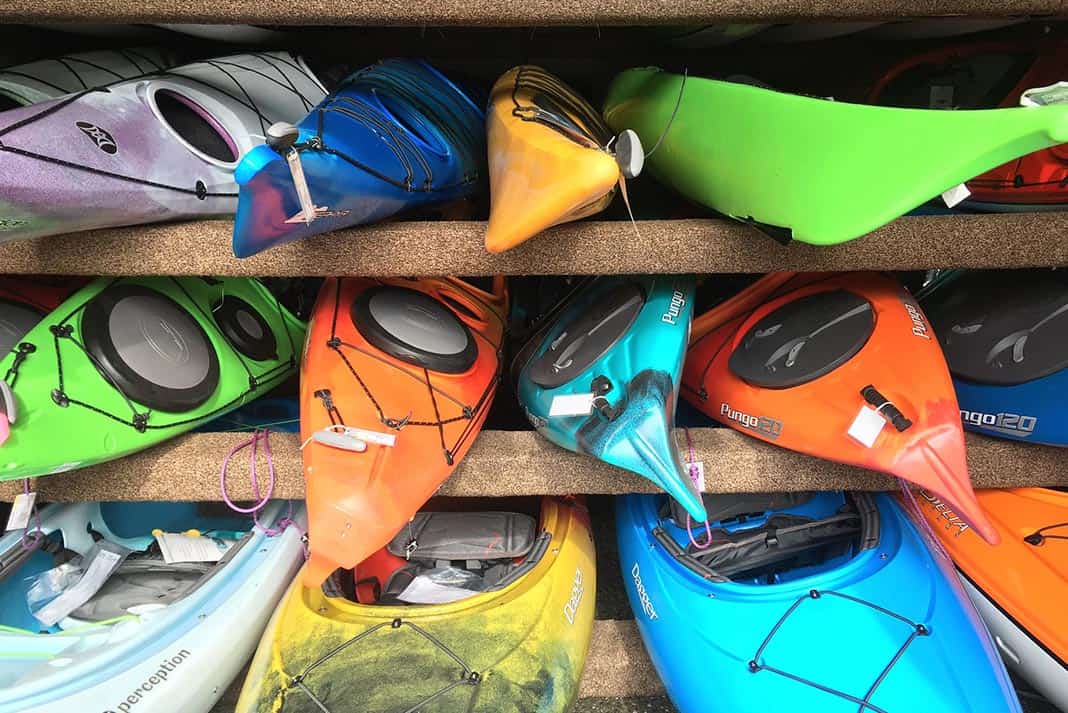
Hull Shape
Along with width, the shape of the bottom and chines (where the sides of the kayak meet the bottom) determine primary and secondary stability. A flat-bottomed boat with excellent primary stability is initially very stable, but if it is leaned too far, it quickly capsizes.
Kayaks with shallow V and shallow arch hulls prioritize secondary stability, offering better performance and stability on edge, useful for open- and rough-water paddling. Chines can be rounded, hard or multi, and will affect how the boat feels when edging and how aggressively it carves turns.
“The most stable boats quickly become the most boring,” warns Ocean River Sports staffer Julien Huard. “Many people, especially new paddlers, pick the boat that feels most stable, not the one that suits them best for the long-term.”
A final factor—rocker—describes the upward curve of the bow and stern and determines maneuverability. Heavily rockered boats turn very easily and are ideal for playing in rough water. Kayaks with minimal rocker track well and are suitable for fitness paddling and long-distance touring.
Kayak materials
“Buy the lightest boat you can afford,” advises Bush. “If you can’t lift it, you won’t paddle it. You’re better off writing yourself a check and stapling it to your garage.”
“Learn the pros and cons of each material before buying,” suggests McDowell. Modern construction materials include rotomolded plastic (durable and affordable), thermoformed polyethylene (lighter and attractive shiny finish) and composites like fiberglass, carbon or Kevlar (stiffer, lighter still and the priciest option).
Paddlers with an eye for traditional aesthetics and feel may prefer a boat made from ultralight wood composite panels.
To summarize what we’ve talked about so far in regard to size and materials, check out this video from the Toronto Outdoor Adventure Show featuring James Roberts from the Ontario Sea Kayak Centre giving his best advice on buying a kayak.
Kayak features
Does the kayak have a place for everything you want to carry, inside or on the deck? Kayak accessories are key. If you’re planning to take overnight trips or paddle open water, make sure your boat has waterproof storage hatches and bulkheads.
For safety and convenience, look for safety lines, deck rigging and grab or carry handles on bow and stern. You’ll be spending a lot of time on your backside, so make sure the seat, back-band or backrest and outfitting are comfortable and adjustable.
Kayak brands
There are an overwhelming number of brands to choose from when kayak shopping. For a detailed breakdown, including which companies specialize in which types of kayaks, check out our Guide To The Best Kayak Brands For Fishing, Sea Kayaking, Touring & More.
Where to buy a kayak
REI
While REI has a more limited selection of kayaks, they still supply over 75 models from 20+ brands. The handy star-rating system will help you identify which kayaks are the favorites among customers based on on-site reviews. You can also read customer reviews for more detailed insight into each boat.
Have questions? REI offers a Live Chat feature on their website allowing you to pick the brain of a sales representative online. Once you’ve made up your mind you can ship the kayak of your choice to any REI store for free and then pick it up.
Amazon
When it comes to convenience, it’s a no-brainer to shop on Amazon—yes, even for kayaks. Besides fast shipping, the other advantage to Amazon is the hundreds of reviews, allowing you to feel more confident about the purchase you make.
You’ll be able to find a variety of kayaks from inflatable to sit-on-top to tandem. However, you do need to be careful not to be drawn in by Amazon’s “Under $300” category. A kayak should be an investment in both quality and safety, two things you are not going to get when buying a kayak for less than $300. Amazon does sell kayaks from reputable brands such as Perception, Old Town and Vibe, however, so if you are being a little more selective when shopping for a kayak on Amazon you can still find a great deal on a high-quality boat.
The other drawback to shopping on Amazon is you won’t be able to get the advice of a knowledgeable sales associate. Many paddlesport retailers at least have a live chat option on their website, allowing you to message back and forth with a sales rep before you make a purchase. This isn’t something Amazon offers, though, meaning you’ll have to turn to reviews for more information about a product. However, you also have to be wary of reviews themselves, as research has shown some products have inflated ratings. Once again, Amazon can be a great place to find a good price on a kayak—but make sure you do plenty of research on the kayak you’re looking at before making a purchase.
Walmart
While you can still find higher quality kayaks from top brands like 3 Water Kayaks and Pelican at Walmart, it’s a good idea to avoid buying a kayak from Walmart altogether. One of the issues is Walmart employees are not going to be as knowledgeable about kayaking as employees at an outdoors store or paddling retailer. For this reason, even if you are shopping for higher-quality boats, you might end up with something ill-suited to your skill level and pursuits out on the water.
Another issue is the quality of many of the boats. The lower price tag on kayaks at Walmart indicates cheap materials and poor design. These kayaks are made of thin plastic that can easily be scratched, dented or even punctured. These plastic materials are also heavier, making it more difficult for you to get your kayak to the water. And if the weight of your kayak doesn’t deter you from getting out on the water, the discomfort you experience when paddling will. The poor design of many of these kayaks can make them frustrating to paddle, not to mention the lack of padded seats or even foot pegs making for an uncomfortable experience.
As a generalization, kayaks at Walmart are not a great investment. If you want to have an enjoyable time on the water and, more importantly, maximize safety, save up until you can afford a higher quality kayak.
Local Retailers
Walmart may not be the best place to shop for a kayak, but that doesn’t mean there are no benefits to purchasing a kayak from a physical establishment. A local paddlesports retailer has expert staff who will be able to match your skill level and preferences to the correct kayak, ensuring you make an informed purchase.
“A knowledgeable salesperson can help navigate to your needs and simplify all the technical terminology for you,” says Daniel Collins, retail manager at Ocean River Sports.
Many retailers also let you try the kayak before you buy. As we mentioned earlier, actually getting in the kayak and going for a paddle is the best way to know whether you are going to love a boat. Buy from a shop that offers on-water test paddling and try as many models as you can before settling on the kayak of your dreams.
Best time to buy a kayak
So when is the best time of year to buy a kayak? It depends on your priorities. If you want the best selection of kayak models and colors, shop at the beginning of the season when dealers have lots of stock and companies have released their latest models. You can start your search in the spring and into the beginning of the summer.
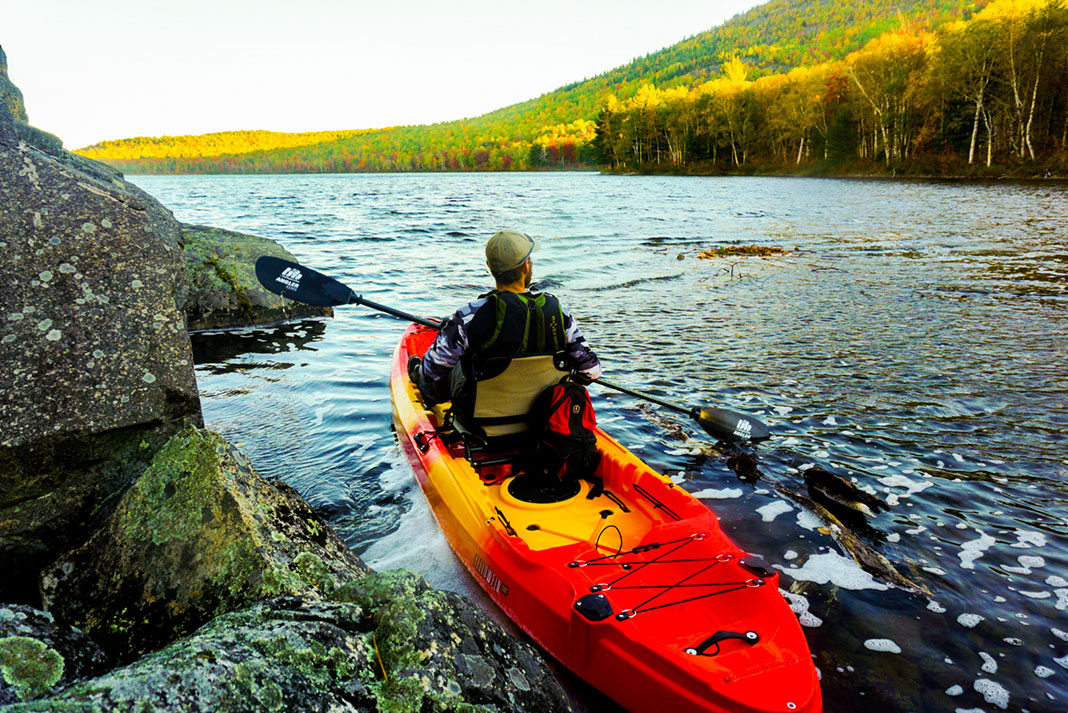
If you want to save money, purchase a kayak at the end of the season. You might find some great deals at the end of August and into September as dealers will want to clear out their stock to make room for next year’s inventory. The trade-off is you may have fewer choices as models and colors sell out. Looking out for sales around Black Friday and Boxing Day can also yield great savings on kayaks.
Whether you’re looking to get a great deal or get the latest model, the absolute best time to buy a kayak is when you have a considerable budget saved up. While it may be tempting to buy the kayak you can afford right now, you don’t want to cheap out on a boat you won’t enjoy paddling or that is unsafe. If you can’t afford the right kayak quite yet, hold out until you’ve saved up enough. It’ll be worth it for both the enjoyment you’ll get out of the boat and safety you’ll experience on the water. Make sure to factor in the accessories you will need to purchase alongside your boat such as a PFD and paddle too.
How much should you spend on a kayak?
This is a highly individualized question that depends on what you need your kayak to be able to do. The cost of a kayak will vary greatly depending on the materials used, size and features. For example, hard-shell kayaks tend to be more expensive than inflatables. Among hard-shell kayaks, those made with carbon are more expensive than those made with polyethylene. Fishing kayaks with an integrated motor will be pricier than a regular paddle-powered boat.
Expect to pay $400 and up for a decent quality, bare bones recreational design and $1,000 and up for a more performance-oriented design. On average, whitewater kayaks tend to be around $1,000 and touring kayaks around $2,000.
So many kayaks, so little time. | Feature photo: Courtesy Ontario Tourism


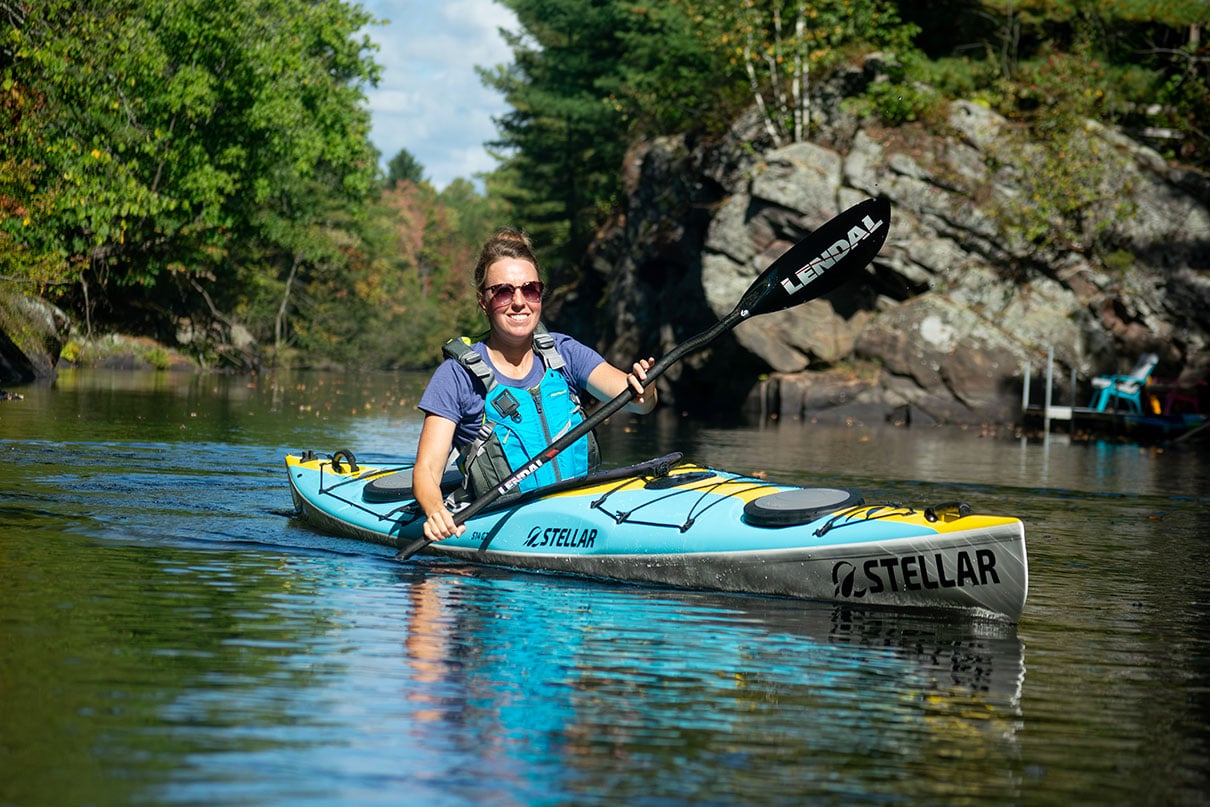
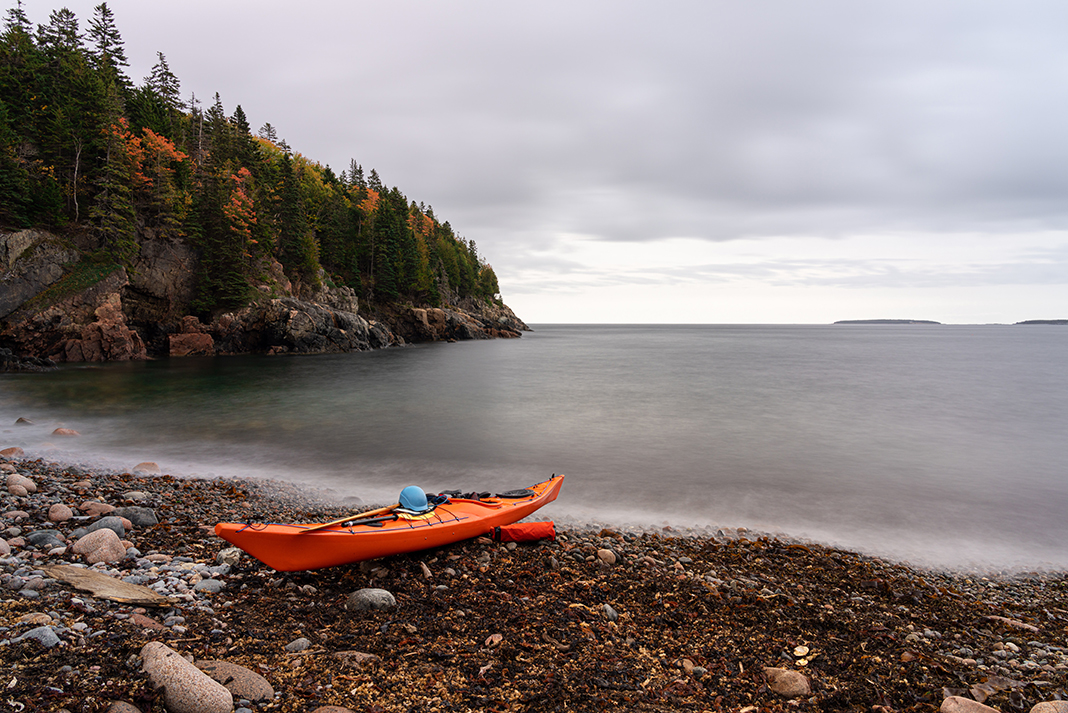






You make some good tips on how to find the right type of kayak. I agree that you want to consider the size because smaller equals dryer. My husband and I are looking for someone to train us to kayak, so we can go whitewater rafting, so we’ll have to consider the size of the kayak we should use first.
I agree that it’s a good idea to test paddle a kayak in the water. It’s even better if you can test paddle a
kayak in the type of conditions you’ll likely encounter. I bought a kayak (no opportunity to paddle first),
based on good reviews. After it was delivered, I first paddled it on a lake. I was very impressed on how
well it tracked, although noticed that the storage was less than I expected. The real surprise however, came
when I was paddling on a mostly flat river, but encountered some small waves. It was a lot of fun, but a
real shock when the small waves washed over the deck and right into the cockpit, soaking my legs.
I’m a small 98 lb. woman, and had barely anything in the front storage hatch, so it wasn’t a weight issue.
So even if I’d test paddled this kayak first in calm water, I wouldn’t have been aware that this kayak
preferred to go through the waves, rather than dance over them! There were hints of this problem in
the reviews I’d read, but I just assumed it was due to the fact that the reviewer was a guy who weighed
almost twice what I do. The best thing to do if possible, is to rent or borrow a kayak first, and test paddle
it in the most challenging conditions you may possibly encounter (wind, waves, currents). So, just realize
the test paddle in flat, calm conditions has some limitations.
be paddling in flat, calm conditions, then
Here in Europe Prijon is one of the most reputated and well known brand. I just missed it in your list…
Have a 16’ Delta kayak purchased from Rudabegas in Madison. In water once. Suggestions on how to sell it? Paid $2,565 for it. Asking $900. Thanks